INFLUENCE OF LIGHTNING STRIKES ON THE OPERATION OF COHERENT FOCL
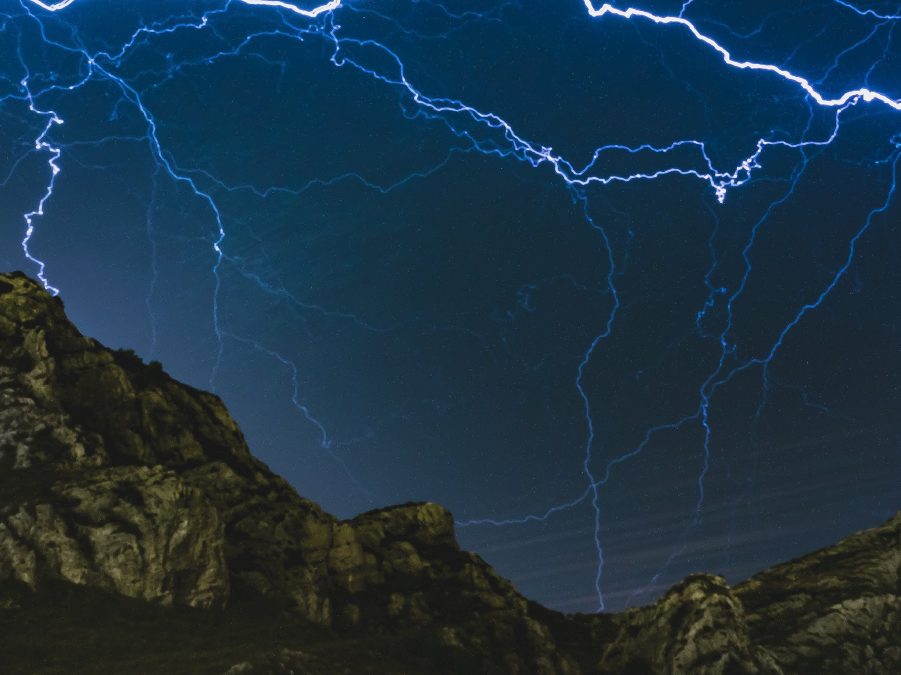

Introduction
Coherent communication systems have made a revolutionary breakthrough in the development of fiber-optic DWDM communication lines, dramatically increasing the bandwidth of networks and the range of non-regenerative transmission. However it was found, that lightning strikes, causing a fast state of polarization rotation of a light wave with information signal, can interrupt the operation of coherent FOCL based on aerial fiber-optic cables located in a ground wire. To ensure uninterrupted operation of those coherent communication systems in case of lightning strikes two ways are possible. The first one is development of more fast digital information processing systems for coherent receivers. The second one is development of new types of optical ground wire cables (OPGW), in which the induced magnetic field is much smaller than that in OPGW used today.
For the first time, the influence of lightning strikes on the operation of fiber-optic communication lines (FOCL) overhead laying using optical cables in a ground wire (OPGW) was investigated in the works of M. Kurono and colleagues [1, 2]. In the articles, the dynamics of polarization at the moment of a lightning strike into a ground wire with an optical cable (OC) is investigated theoretically, experimentally and using direct field measurements. It is noted that lightning strikes cause very rapid changes in polarization that can disrupt the operation of coherent communication systems.
Analysis of the polarimeter signal shape showed that the polarization changes at a maximum rate within a short time of several tens of microseconds, which corresponds to the rise time of the lightning current. The largest recorded polarization shift was 165⁰. Almost simultaneously with the work [1], in 1996, the article by S.A. Sokolov [3] was published, in which the manifestation of the Kerr and Faraday effects in the optical cable was considered.
However, the first generation of coherent communication systems, which was actively studied in the late 1990s, did not find practical application, and lightning discharges do not significantly affect the operation of fiber-optic communication lines with systems based on amplitude modulation and direct detection. Therefore, works [1–3] were hardly noticed by the scientific and engineering communities.
A new generation of coherent communication systems using digital signal processing (DSP) has proven to be extremely effective, quickly become widely used in practice and has provided a significant increase in the capacity of fiber-optic lines and communication networks.
Through the use of polarization multiplexing and multi-level quadrature modulation formats, the channel rate has been increased from 10 Gbps, first to 100 Gbps, and then to 400 Gbps, and continues to increase. It is important to note that for the operation of coherent communication systems, the use of dispersion compensators at the physical level is not required due to its electronic compensation carried out in the DSP unit.
However, during operation, coherent communication systems using the infrastructure of overhead power lines (air cable, FOCL over a high-voltage line) have one drawback. Errors occur in the channel of a coherent transmission system in those periods of time when the air FOCL is in the zone of a thunderstorm front.
Today, the nature of this phenomenon is generally understood. During a thunderstorm, a lightning strike forms a strong longitudinal magnetic field in the fiber, a change in which, in turn, leads to rotation of the state of polarization of the optical signal (SOP) and the appearance of errors on the receiving side [1–5]. The error is caused by the insufficient speed of compensation in the DSP for strong SOP rotations caused by the magnetic field during lightning strikes.
In works [4, 5], the dynamics of the Stokes parameters in the laid FOCL was measured. In [4], the maximum measured angular rate of change in the state of polarization was 5.1 Mrad/s. A close maximum value (5.3 Mrad/s) for one observation season was recorded in [5]. In addition to the maximum rate of change of lightning current, other factors, such as cable design and grounding methods, also affect the SOP rate of change.
To eliminate interruptions in the operation of coherent communication systems due to lightning strikes, two approaches are possible. The first one is the development of faster digital information processing systems for coherent receivers (DSP). The second one is the design of new types of cable, the induced magnetic field in which is much lower than in the structures used today. As will be shown below, the most effective way to finally solve the problem of communication interruption due to lightning strikes is to combine these two approaches.
Development of coherent receivers with increased polarization rotation compensation rate
The most important characteristic of lightning is the time derivative of its current (steepness). This value reaches its maximum at the leading edge of lightning (Fig. 1)
In a typical one-layer cable design, the electric current I generates a magnetic field with induction B due to the presence of twisting in the ground wire, inside which the optical cable is located:
B = μ0NI, (1)
where n is the density of the turns (n = 1/d, d is the length of lay),
μ0 is the magnetic permeability of the vacuum [4π · 10–7 H/m].
In accordance with the Faraday effect, the magnetic field causes a change in the state of polarization at the output of the FOCL. In the approximation of an isotropic fiber and linear light polarization, the polarization rotation angle Θ is described by the well-known formula:
Θ = VBL = μ0VnIL = μ0VNI,
where N is the total number of turns in the section between the line supports, V is the Verdet constant of the telecommunication fiber (V = 0.53 rad · T – 1 · m – 1).
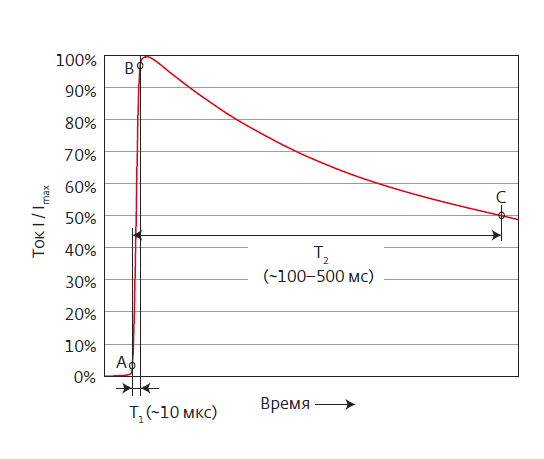
Fig. 1. Lightning current pulse scheme [5]
With typical parameters of OPGW and lightning (length of lay is 0.2 m, distance between supports 150 m, lightning current 20 kA), the polarization rotation of the plane of the light wave exceeds 10 rad! At the leading edge of the lightning current pulse (with a duration of 1–20 μs, see Fig. 1), rapid changes in the current dI/dt lead to the rotation of the polarization state at a rate of 0.5 to 10 Mrad/s [5]. In [6], similar values are given: the average values of lightning currents (at their peak) are about 30 kA with a steepness of the current front up to 24 kA/μs.
The influence of a rapid change in SOP on the operation of coherent communication systems was experimentally investigated in [5]. In this work, the dependence of the required optical signal-to-noise ratio (OSNR) on the angular velocity of the SOP rotation was measured in two modes of operation: with the SOP rotation compensation algorithm turned off and on.
OSNR Required in DWDM lines
OSNR decreases due to amplified spontaneous emission (ASE) noise introduced by optical erbium amplifiers in extended multi-span DWDM lines. The limit to which the OSNR on the line can be reduced without affecting the operation of the communication system is called the required OSNR. The lower the value, the better.
In the absence of SOP rotation compensation algorithms, the penalty (increase in the required OSNR) exceeds 4 dB already at an angular velocity of 2 Mrad/s. The use of algorithms for fast compensation of polarization rotation made it possible to significantly reduce the penalty from lightning impact (see Fig. 2).
The frequency of thunderstorms and the average number of thunderstorms per month vary greatly across geographic regions and seasons. In areas with frequent thunderstorms, up to 70 lightning strikes per sq. km per year. In the European part of Russia, the average frequency of lightning is much lower: about 3-5 per sq. km [7]. If we assume that the ground wire collects all lightning in a strip of 100 m along the line, then we get an area of 100 sq. km. In other words, about 500 lightning strikes OPGW a year at a frequency of up to 5 lightning per 1 sq. km annually.

Fig. 2. Dependences of the required OSNR on the state of polarization rotation vector speed on the Poincaré sphere for the MS-400E-Q100-01 T8 transponder with disabled (SOP suppression - OFF) and enabled (SOP suppression - ON) polarization state tracking algorithms
Without the use of the SOP rotation suppression algorithm, already at a polarization rotation speed of 2 Mrad/s, the penalty exceeds 3 dB, which is greater than the operational margin. As a result, the frequency of communication interruptions due to lightning strikes becomes unacceptably high, even in regions with an average level of thunderstorm activity.
With the use of the SOP fast rotation compensation algorithm, only a small fraction of lightning causes polarization rotation at a speed of more than 6 Mrad/s, creating an OSNR penalty of more than 1.5 dB. However, the number of such events, which can reach one in three months, remains unacceptably large. In such a situation, in order to avoid interruption of communication, it is necessary to include an additional OSNR margin (about 2 dB) during design, which ultimately leads to an increase in the cost of fiber-optic communication lines.
According to various estimates, an increase in the margin by 2 dB can lead to an increase in the cost of fiber-optic cable infrastructure by 10–20%, depending on the direction of the efforts being made to improve. For example, a 2 dB reduction in attenuation in a cable in a typical amplification span of 100 km will require a switch from standard optical fiber (OF) to a reduced attenuation OF, which will increase the cost of line-cable structures by about 10-15%.
Eliminating the requirement to use an additional OSNR margin for protection against communication interruptions during lightning strikes makes it possible to use of an optical cable in a ground wire of a special design in FOCL, which reduces the magnetic field in the optical fiber by about an order of magnitude [8].
Optimization of the OPGW design to mitigate the impact of a pulsed current from a lightning strike on the operation of coherent communication systems
Typical modern OPGWs consist of a stainless steel tube (SST) with the fiber in a hydrophobic gel center surrounded by one or more layers of aluminum-clad and / or aluminum-clad steel wires (Figure 3).
SST mainly protects the optical fiber from environmental and mechanical factors created by external layers. Steel wires in braids resist tensile forces, aluminum wires act as conductors of impulse currents created by lightning strikes. Currents flow from the points of greatest impact of lightning to grounding points on the supports and substations of overhead lines.
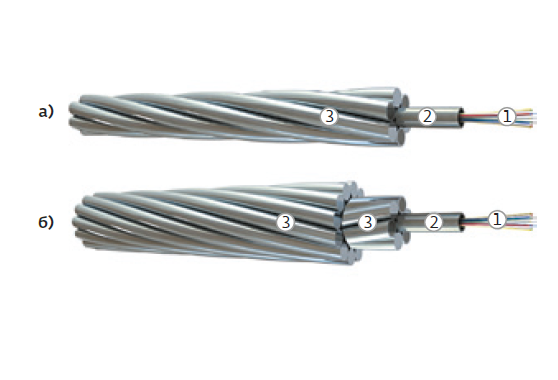
Fig. 3. OPGW constructions with one (a) and two (b) layers: 1 - optical fibers; 2 - steel tube filled with hydrophobic gel; 3 - strand of steel wires, clad with aluminum and / or wires of aluminum alloy
Currents of the order of 100 kA, created by lightning strikes, not only lead to heating of the conductive elements of the cable, but also form a longitudinal pulsed magnetic field inside it. This effect can be understood by imagining the cable as a solenoid of a collection of helically twisted wires around the SST with little transient conductance.
We will proceed from the fact that the amplitude of the magnetic induction in the central part of the OPGW depends on the design of the cable, in which the outer layers of wires behave like a series of solenoids. From simple physical considerations, it follows that a two-layer design with the opposite direction of twisting can drastically reduce the magnitude of the magnetic field in the center of the cable created by a lightning strike, and thereby reduce the rate of SOP change.
To solve the problem of lightning resistance of high-speed communication systems, in [8], a mechanism was proposed to compensate for the effect of lightning by using an additional layer of wires in the OPGW design, which has an opposite direction with respect to the first. In this case, there is a mutual compensation of oppositely directed magnetic fields, and hence the degree of influence on the optical fiber. The maximum field compensation occurs with the optimal selection of the OPGW design parameters: steps of winding layers, wire materials and their diameters.
These assumptions were verified experimentally on a setup, the diagram of which is shown in Fig. 4. On the test bench, on insulated suspensions, two OPGW samples, each 98 m long, are placed in a taut horizontal state. The impulse current is formed by a capacitor current source (U = 24 V; C = 0.1 F) with TRIAC control with current regulation using a resistance box (0.1–1.0 Ohm), the shape of the discharge current is recorded using a USB oscilloscope. A test continuous signal at a wavelength of 1550 nm is fed from a laser optical source EXFOFLS600 to the input of the first fiber of the OPGW with a length of about 100 m. All 12 fibers of the G.652 type in each of the cables under test are spliced into a circular loop, the total length of the optical fiber exposed to the discharge current, is 1175 m. The polarization state at the output of the 12-fiber stub is measured by the SOP Keysight N7781N analyzer.
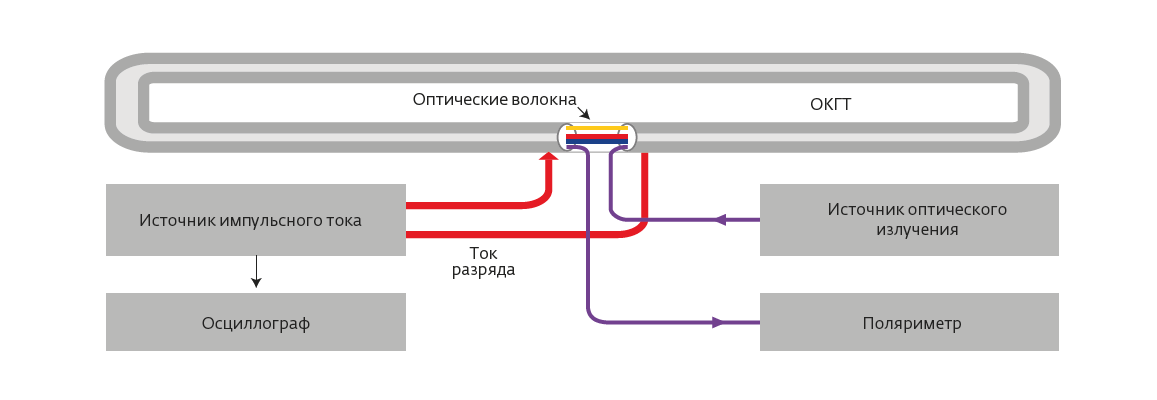
Fig. 4. Diagram of the experimental installation
The front time varied depending on the intrinsic parameters of the cable and the size of the damping resistor and was 0.3–1.2 ms, the pulse duration was 80–100 ms. The tests were carried out at eight values of the discharge current through the cables in the range from 30 to 160 A.
The rate of change in SOP was investigated for the given parameters of the current pulse in OPGW of one-layer and two-layer designs. Twisting in a two-layer version was carried out in opposite directions. The tests were carried out using typical OPGW without design optimization.
The polarization analyzer registers on the Poincaré sphere the motion of a point characterizing the polarization of the output radiation, as well as the time dependences of the Stokes parameters, from which the angle of rotation of the polarization axis under the action of a current pulse was calculated.
Figures 5 and 6 show the time dependences of the angle of rotation of the polarization axis and the speed of its rotation, respectively. For clarity, the values are given in modulus, the initial phases are equated to zero, the graphs are aligned to a single start time of the impulses. The moments of the beginning of the pulse fronts in Figs. 5 and 6 coincide.
An analysis of the experimental results shows that with comparable effects of the current in the pulse (83 A and 91 A for one-layer and two-layer samples, respectively), the angle of rotation of the polarization axis in a two-layer OPGW is 8.3 times less than in a one-layer one. In this case, the rotation speed of polarization is 3.4 times less, which is due to the different steepness of the current pulse fronts due to the difference in the OPGW parameters such as the resistance per unit length and inductance of the current-carrying elements of the cable. If we recalculate taking into account the differences in the steepness of the pulse fronts, the rotation speed will be reduced by about the same amount (8.3 times).
Thus, despite the fact that the two-layer design was not optimized to minimize the magnetic induction in the core when a pulsed current flows through the OPGW, it was shown that the presence of two layers of wires twisted in opposite directions in the design significantly weakens the effect of changing the SOP when a pulsed current through the cable. Accordingly, a further increase in the effect of this attenuation can be expected when optimizing the design parameters.
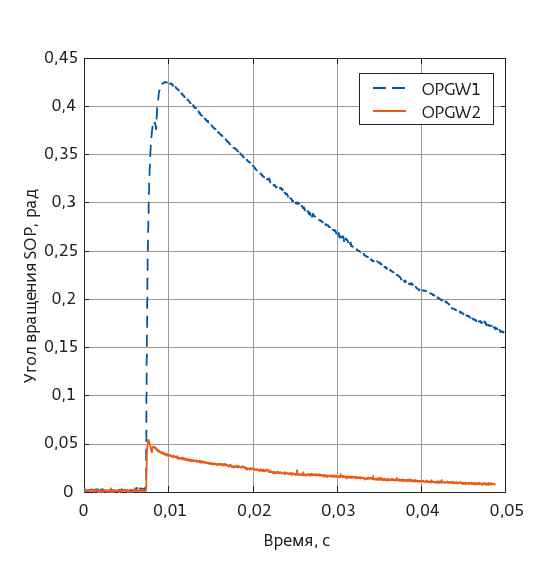
Fig. 5. The angle of rotation of the polarization axis in the OPGT fiber under the action of a current pulse for two cable designs: OPGW1 - with one layer of wires; OPGW2 - with two layers of wires
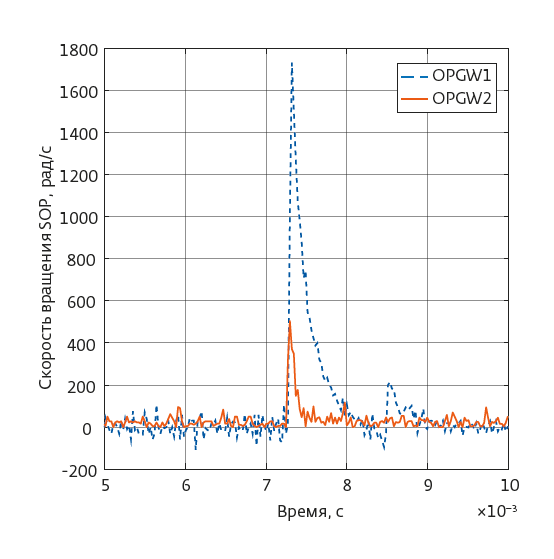
Fig. 6. The rotation speed of the polarization axis in an OPGT fiber under the action of a current pulse for two cable designs: has one layer of wires; OPGW2 has two layers of wires
Conclusion
The results of the experimental studies show that the optimal solution to the problem of interrupting communication when lightning strikes the ground wire is to combine the use of algorithms for fast compensation of the SOP rotation using the optimal OPGW design that weaken the magnetic field in optical fibers. According to the available experimental data and estimates, this combination provides a resistance to 99.9% of lightning strikes. However, as in all cases with rare random events, it is advisable to conduct long-term field tests to obtain information about the required speed of operation of algorithms for fast compensation of SOP rotation in OPGWs of various designs. Since the lifetime of the optical cable infrastructure is more than 25 years, it can be predicted that during this time the communication systems will be modernized with the transition from 100 Gbps (QPSK format) to 400 Gbps and more (8QAM, 16QAM and higher formats). High speed systems (400 Gbps and above) are even more susceptible to rapid polarization reversals caused by lightning. With this in mind, the use of optimized OPGW designs that attenuate the magnetic field in optical fibers becomes even more attractive.Sources
1. Kurono M., Isawa K., Kuribara M. Transient state of polarization in optical ground wire caused by lightning and impulse current // International Symposium on Polarization Analysis and Applications to Device Technology. – International Society for Optics and Photonics, 1996. Vol. 2873. PP. 242–245.
2. Kurono M., Kuribara M., Isawa K. Field measurements and a study of transient state of polarization produced in OPGW by lightning // Electrical Engineering in Japan. 1999. Vol. 128. No. 4. PP. 55–64.
3. Sokolov S.A. Kerr and Faraday effects in an optical cable // Electrosvyaz. 1996. No. 4.
4. Charlton D. et al. Field measurements of SOP transients in OPGW, with time and location correlation to lightning strikes // Optics Express. 2017. Vol. 25. No. 9. PP. 9689–9696.
5. Konyshev V.A. et al. Influence of lightning strikes on the operation of a coherent communication system based on FOCL-OHL // Applied Photonics. 2020. T. 7. # 2. p.118–129.
6. Rakov V.A. et al. CIGRE technical brochure on lightning parameters for engineering applications // 2013 International Symposium on Lightning Protection (XII SIPDA). IEEE, 2013. PP. 373–377.
7. The Optical Networking and Communication Conference & Exhibition OFC-2016. Coriant White Paper. Lightning Strikes and 100G Transport 74C.0133. Rev. A 03/16.
8. Abaev R.R., Frolov I.V., Akopov S.G. Optical cable in a lightning protection cable // Patent of the Russian Federation No. 2688897. 2019. Bul. No. 15. (After correction B. No. 19).
Authors of the publication
S. Akopov, Ph.D., Technical Director of Corning CIS LLC,
V. Konyshev, Ph.D., head of the scientific group of LLC "T8 STC",
O. Naniy, Doctor of Physical and Mathematical Sciences, Professor of Moscow State University. M.V. Lomonosov, head of department of LLC "T8 STC",
V. Treshchikov, Candidate of Physical and Mathematical Sciences, General Director of T8 STC LLC, Art. scientific. sotr. Fryazinsky branch of the Institute of Radio Engineering and Electronics named after V. A. Kotelnikov RAS,
R. Ubaydullaev, Candidate of Physical and Mathematical Sciences, Leading Engineer of T8 STC LLC,
I. Frolov, Leading Process Engineer, Saranskkabel-Optics LLC
